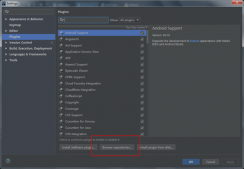使用orm框架我们更多的是使用其查询功能,那么查询海量数据则又离不开性能,那么这篇中我们就看下mybatis高级应用之延迟加载、一级缓存、二级缓存。使用时需要注意延迟加载必须使用resultmap,resulttype不具有延迟加载功能。
一、延迟加载
延迟加载已经是老生常谈的问题,什么最大化利用数据库性能之类之类的,也懒的列举了,总是我一提到延迟加载脑子里就会想起来了hibernate get和load的区别。ok,废话少说,直接看代码。 先来修改配置项xml。
注意,编写mybatis.xml时需要注意配置节点的先后顺序,settings在最前面,否则会报错。
|
1
2
3
4
|
<settings> <setting name="lazyloadingenabled" value="true"/> <setting name="aggressivelazyloading" value="false"/> </settings> |
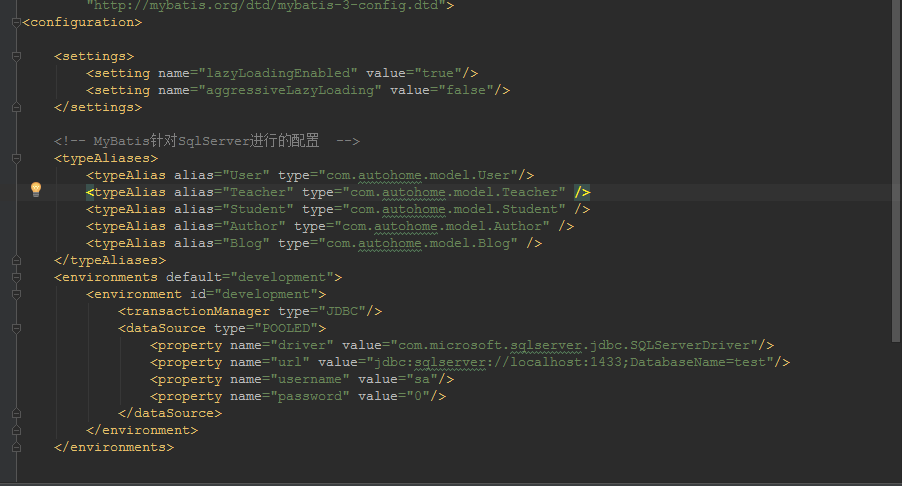
前面提到延迟加载只能通过association、collection来实现,因为只有存在关联关系映射的业务场景里你才需要延迟加载,也叫懒加载,也就是常说的用的时候再去加载。ok,那么我们来配一个association来实现:
我来编写一个加载博客列表的同时加载出博客额作者, 主要功能点在id为blogauthorresumtmap这个resultmap上,其中使用了association,关键点是它的select属性,该属性也就是你需要懒加载调用的statment id。 当然需要懒加载的statement 返回值当然是resultmap
|
1
2
3
4
5
6
7
8
9
10
11
12
13
14
15
16
17
18
|
<resultmap id="blogauthorresumtmap" type="blog"> <id column="id" property="id"/> <result column="title" property="title"/> <result column="category" property="category"/> <result column="author_id" property="author_id"/> <!--使用assocition支持延迟加载功能,配置延迟加载关联关系--> <association property="author" javatype="author" select="selectauthorbyid" column="author_id"/> </resultmap> <!--要使用延迟记载的方法--> <select id="selectblogauthor" resultmap="blogauthorresumtmap"> select id,title,category,author_id from t_blog </select> <!--延迟加载查询博客对应的作者方法--> <select id="selectauthorbyid" parametertype="int" resulttype="author"> select id,name from t_author where id=#{value} </select> |
ok,来看测试结果:
|
1
2
3
4
5
6
7
8
9
10
11
12
13
14
15
16
17
18
|
@test public void getblogauthorbylazyloading(){ sqlsession sqlsession=null; try{ sqlsession=sqlsessionfactory.opensession(); list<blog> list = sqlsession.selectlist("com.autohome.mapper.author.selectblogauthor"); for (blog blog:list) { system.out.println("id:"+blog.getid()+",title:"+blog.gettitle()+",category:"+blog.getcategory()); system.out.println("author:"+blog.getauthor().getname()); } }catch(exception e){ e.printstacktrace(); }finally { sqlsession.close(); } } |


从图一中看出,执行selectblogauthor返回list<blog>对象时只执行了sql select id,title,category,author_id from t_blog,循环遍历时才去执行select id,name from t_author where id=?。
二、一级缓存
了解缓存前我们先看一张图片(图片来源于传智播客视频图片)。从图中可以了解一级缓存是sqlsession级别、二级缓存是mapper级别。在操作数据库时我们需要先构造sqlsession【默认实现是defaultsqlsession.java】,在对象中有一个数据结构【hashmap】来存储缓存数据。不同的sqlsession区域是互不影响的。 如果同一个sqlsession之间,如果多次查询之间执行了commit,则缓存失效,mybatis避免脏读。
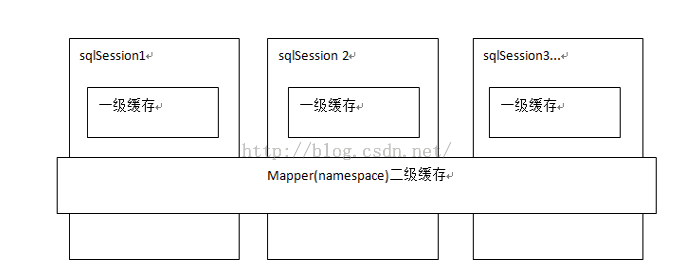
ok,在看mybatis一级缓存时,我总是觉的一级缓存有点鸡肋,两个查询如果得到一样的数据,你还会执行第二次么,果断引用第一次的返回值了。 可能还没了解到一级缓存的奥妙之处。一级缓存默认是开启的,不需要额外设置,直接使用。
|
1
2
3
4
5
6
7
8
9
10
11
12
13
14
15
16
17
|
public void testcache(){ sqlsession sqlsession=null; try{ sqlsession=sqlsessionfactory.opensession(); author author = sqlsession.selectone("com.autohome.mapper.author.selectauthorbyid",1); system.out.println("作者信息 id:"+author.getid()+",name:"+author.getname()); author = sqlsession.selectone("com.autohome.mapper.author.selectauthorbyid",1); system.out.println("作者信息2 id:"+author.getid()+",name:"+author.getname()); }catch(exception e){ e.printstacktrace(); }finally { sqlsession.close(); } } |

从debug截图来看,当我们第一次调用方法时执行了select id,name from t_author where id=? 此时缓存中还没有该数据,则执行数据库查询,当再次执行时直接从缓存中读取。
执行demo后我们来看下这个查询过程保存到缓存的源码,先看下defaultsqlsession.java。我们调用的selectone(),从代码中看它是直接调用selectlist()然后判断返回值size大小。
|
1
2
3
4
5
6
7
8
9
10
11
12
13
14
15
16
17
|
@override public <t> t selectone(string statement) { return this.<t>selectone(statement, null); } @override public <t> t selectone(string statement, object parameter) { // popular vote was to return null on 0 results and throw exception on too many. list<t> list = this.<t>selectlist(statement, parameter); if (list.size() == 1) { return list.get(0); } else if (list.size() > 1) { throw new toomanyresultsexception("expected one result (or null) to be returned by selectone(), but found: " + list.size()); } else { return null; } } |
再跟踪到selectlist方法,看到先构造mappedstatement对象,然后看到真正执行query()的是一个executor对象,在defaultsqlsession.java中executor是成员变量,再翻到org.apache.ibatis.executor包中看到executor实际是一个接口。ok,那么我们debug时发现其引用是cachingexecutor。再打开cachingexecutor.java
|
1
2
3
4
5
6
7
8
9
10
11
|
@override public <e> list<e> selectlist(string statement, object parameter, rowbounds rowbounds) { try { mappedstatement ms = configuration.getmappedstatement(statement); return executor.query(ms, wrapcollection(parameter), rowbounds, executor.no_result_handler); } catch (exception e) { throw exceptionfactory.wrapexception("error querying database. cause: " + e, e); } finally { errorcontext.instance().reset(); } } |
从cachingexecutor.java的两个query()可以看到先去构造cachekey 再调用抽象类baseexecutor.query(),这个也是最关键的一步。
|
1
2
3
4
5
6
7
8
9
10
11
12
13
14
15
16
17
18
19
20
21
22
23
24
25
26
|
//先创建cachekeypublic <e> list<e> query(mappedstatement ms, object parameterobject, rowbounds rowbounds, resulthandler resulthandler) throws sqlexception { boundsql boundsql = ms.getboundsql(parameterobject); cachekey key = createcachekey(ms, parameterobject, rowbounds, boundsql); return query(ms, parameterobject, rowbounds, resulthandler, key, boundsql); } //再执行查询方法public <e> list<e> query(mappedstatement ms, object parameterobject, rowbounds rowbounds, resulthandler resulthandler, cachekey key, boundsql boundsql) throws sqlexception { cache cache = ms.getcache(); if (cache != null) { flushcacheifrequired(ms); if (ms.isusecache() && resulthandler == null) { ensurenooutparams(ms, parameterobject, boundsql); @suppresswarnings("unchecked") list<e> list = (list<e>) tcm.getobject(cache, key); if (list == null) { list = delegate.<e> query(ms, parameterobject, rowbounds, resulthandler, key, boundsql); tcm.putobject(cache, key, list); // issue #578 and #116 } return list; } } return delegate.<e> query(ms, parameterobject, rowbounds, resulthandler, key, boundsql); } |
baseexecutor.java
|
1
2
3
4
5
6
7
8
9
10
11
12
13
14
15
16
17
18
19
20
21
22
23
24
25
26
27
28
29
30
31
32
33
|
public <e> list<e> query(mappedstatement ms, object parameter, rowbounds rowbounds, resulthandler resulthandler, cachekey key, boundsql boundsql) throws sqlexception { errorcontext.instance().resource(ms.getresource()).activity("executing a query").object(ms.getid()); if (closed) { throw new executorexception("executor was closed."); } if (querystack == 0 && ms.isflushcacherequired()) { clearlocalcache(); } list<e> list; try { querystack++; list = resulthandler == null ? (list<e>) localcache.getobject(key) : null; if (list != null) { handlelocallycachedoutputparameters(ms, key, parameter, boundsql); } else { list = queryfromdatabase(ms, parameter, rowbounds, resulthandler, key, boundsql); } } finally { querystack--; } if (querystack == 0) { for (deferredload deferredload : deferredloads) { deferredload.load(); } // issue #601 deferredloads.clear(); if (configuration.getlocalcachescope() == localcachescope.statement) { // issue #482 clearlocalcache(); } } return list;} |
再看其中关键代码queryfromdatabase
|
1
2
3
4
5
6
7
8
9
10
11
12
13
14
|
private <e> list<e> queryfromdatabase(mappedstatement ms, object parameter, rowbounds rowbounds, resulthandler resulthandler, cachekey key, boundsql boundsql) throws sqlexception { list<e> list; localcache.putobject(key, execution_placeholder); try { list = doquery(ms, parameter, rowbounds, resulthandler, boundsql); } finally { localcache.removeobject(key); } localcache.putobject(key, list); if (ms.getstatementtype() == statementtype.callable) { localoutputparametercache.putobject(key, parameter); } return list; } |
ok,看了一长串,终于是有点眉目了,我们看到finally中先删除当前key缓存,然后再调用localcache.putobject把最新的结果集存入hashmap中。
三、二级缓存
了解二级缓存之前先来看副图(图片来自传智播客视频,非本人编写),那么从图中我们可以看出,mybatis二级缓存是mapper级别,也就是说不同的sqlmapper共享不同的内存区域,不同的sqlsession共享同一个内存区域,用mapper的namespace区别内存区域。
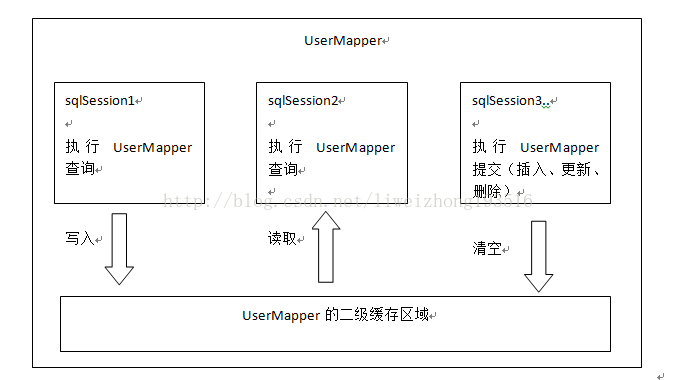
开启mybatis二级缓存: 1、设置mybatis.xml,也就是说mybatis默认二级缓存是关闭的。
2、设置mapper。在mapper.xml内添加标签:<cache/>
3、pojo实现接口serializable。实现该接口后也就说明二级缓存不仅可以存入内存中,还可以存入磁盘。
ok,看一个二级缓存demo:
|
1
2
3
4
5
6
7
8
9
10
11
12
13
14
15
16
17
18
19
20
21
|
@test public void testcache2(){ sqlsession sqlsession=null; sqlsession sqlsession2=null; try{ sqlsession=sqlsessionfactory.opensession(); sqlsession2=sqlsessionfactory.opensession(); author author = sqlsession.selectone("com.autohome.mapper.author.selectauthorbyid",1); system.out.println("作者信息 id:"+author.getid()+",name:"+author.getname()); sqlsession.close(); author author2 = sqlsession2.selectone("com.autohome.mapper.author.selectauthorbyid",1); system.out.println("作者信息2 id:"+author2.getid()+",name:"+author2.getname()); sqlsession2.close(); }catch(exception e){ e.printstacktrace(); }finally { } } |
运行demo可以看出二级缓存不同的地方在于cache hit ratio,发出sql查询时先看是否命中缓存,第一次则是0.0 ,再次查询时则直接读取缓存数据,命中率是0.5。当然数据结构还是hashmap。
如果数据实时性要求比较高,可以设置select 语句的
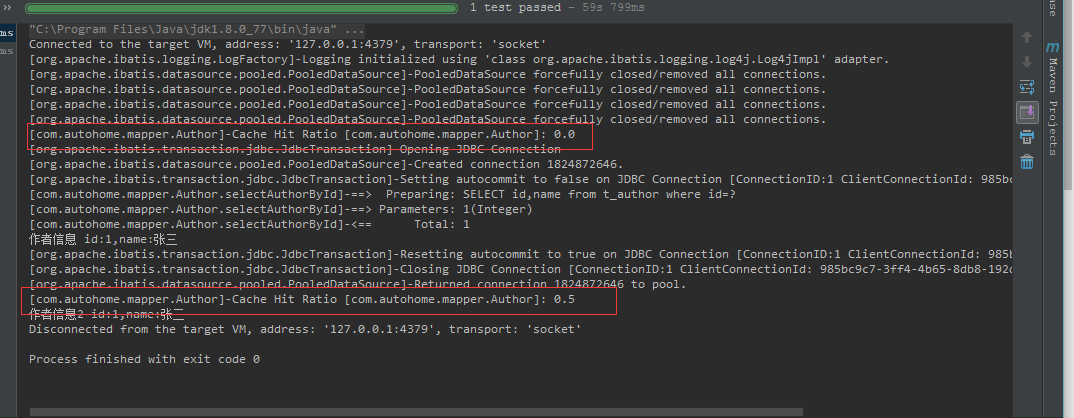
如果数据的查询实时性要求比较高,则设置select语句的usecache="false",则每次都直接执行sql。
|
1
2
3
|
<select id="selectblogauthor" resultmap="blogauthorresumtmap" usecache="false"> select id,title,category,author_id from t_blog </select> |
以上这篇mybatis 延迟加载、一级缓存、二级缓存(详解)就是小编分享给大家的全部内容了,希望能给大家一个参考,也希望大家多多支持服务器之家。
原文链接:http://www.cnblogs.com/sword-successful/p/7400685.html





